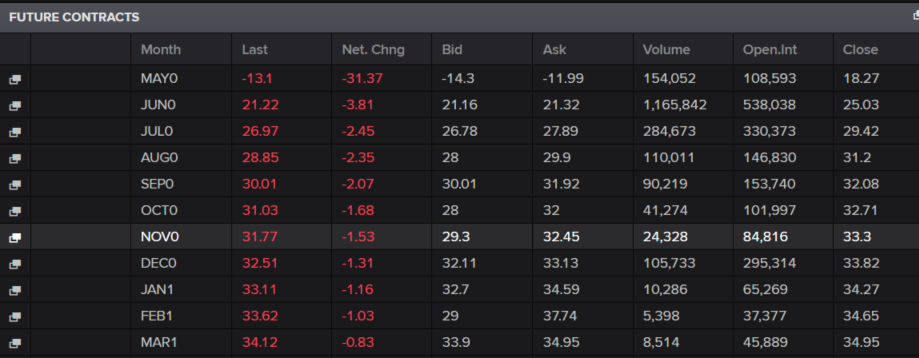U.S. oil prices go negative, but it sounds more exciting than it really is
Headlines abound today around the fact that the U.S. oil prices have gone negative. However, it’s important to understand that this is a very technical development that diversified financial investors don’t have much exposure to.
Let’s start with a bit of background. The coronavirus outbreak has led to significant destruction of oil demand in the short term, given that there are significantly less cars on the roads and far fewer airplanes in the skies. On the supply side, we saw a price war break out between Saudi Arabia and Russia last month. This war recently subsided, with a renewed agreement by OPEC+ to cut production by 10 million barrels per day in May and June, followed by slightly lower reductions for the rest of the year.
Given this lack of demand, and continued production, storage for oil has become a valuable commodity and is becoming increasingly scarce. By some estimates, there are more than 160 million barrels of oil stored on very large crude carriers at sea1, more than double the level of just two weeks ago.
Today’s negative oil prices: Unearthing the details
The price of a barrel of U.S. West Texas Intermediate crude, to be delivered in May, fell to negative $37.63 today. The negative prices were seen only in the May futures contract, which is set to expire tomorrow. Importantly, this May contract had about 10% of the volume traded as the next closest contract (June), so it was a very small part of the actual oil trading today. Additionally, it is important to note that very few of these May contracts actually traded at negative prices. The volume weighted average price for today was $9.23, with only several thousand lots (each lot is 1,000 barrels) trading at negative prices.
Click image to enlarge
Looking out at the rest of the futures curve, the oil price is still firmly positive in the $20-$30 range through to the end of the year. We may see similar developments at the expirations of the June and July contracts if we haven’t seen a short term rebound in demand, significantly reduced production, or some form of strategic buying from governments. The U.S. could be a candidate here, with around 78 million barrels of storage capacity available right now.
In terms of broader implications, we think they are fairly limited right now, given the more technical nature of these headlines, and reactions in other markets suggest something similar. The pricing of inflation saw very modest moves, and while the energy sector in the U.S. was down, it was not the worst performer for the day.
